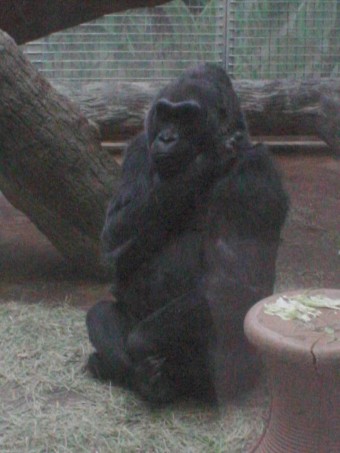This Day in History: December 22nd- Colo
This Day In History: December 22, 1956
 Gorillas are intelligent animals that live together in small groups, usually led by a single male silverback. The first gorillas kept in captivity were held in stark, concrete cages with metal bars. Lacking any stimulation or entertainment, they became bored and depressed. Needless to say, this wasn’t a prime breeding environment.
Gorillas are intelligent animals that live together in small groups, usually led by a single male silverback. The first gorillas kept in captivity were held in stark, concrete cages with metal bars. Lacking any stimulation or entertainment, they became bored and depressed. Needless to say, this wasn’t a prime breeding environment.
As such, up to the mid-1950s, gorillas were exclusively taken from the wild. The animals had to be caught while young and still small enough to be handled safely, and hunters often had to kill the youngster’s parents and other relatives to capture their prey.
But then on December 22, 1956, a little western lowland gorilla named Colo was born at the Columbus Zoo in Ohio. Weighing in at four pounds, the new arrival was the first gorilla to be born in captivity. Colo’s parents, Millie and Mac, had been taken from their home in French Cameroon, Africa and brought to the Columbus Zoo in 1951. As her mother rejected her at birth, Colo ended up having to be raised by Zoo staff.
In the years since Colo’s birth, most zoos have changed their approach to keeping gorillas and other animals in captivity. For instance, efforts are made to simulate the animals’ natural habitats. Further, gorilla habitats are also much less confining than in the past and the majority of the world’s zoos are now engaged in captive breeding programs and have ceased to buy gorillas from the wild, as their numbers are dwindling quickly.
Most captive baby gorillas are now conceived as nature intended while some are helped along via artificial insemination. With the gorilla babies now no longer taken from their mothers during adolescence, it is also much more common for the captive mother gorillas to care for their young, rather than needing zookeepers to do it, as happened to Colo. In cases where this isn’t possible, human caretakers will briefly act as surrogates for the infants until they’re old enough for other gorillas to take over child-raising duties.
Despite being born in 1956 and despite the fact that the average lifespan of a gorilla in the wild is only around 35 years, Colo is still alive today and is the longest living gorilla in captivity.
If you liked this article, you might also enjoy our new popular podcast, The BrainFood Show (iTunes, Spotify, Google Play Music, Feed), as well as:
- That One Time Snakes, Monkeys, Crocodiles, Rats, and a Gorilla Took Over a Ship
- How Do Other Animals Deal with the Umbilical Cord and Placenta When the Baby is Born?
- The Origin of the Bigfoot Legend
- Are There Any Animals Other Than Humans That Commit Suicide?
Bonus Facts:
- Birth control pills meant for human women also work on gorilla females. In fact, currently 223 of the Zoos that are members of the Association of Zoos and Aquariums use “the pill” to help control gorilla breeding.
- To date, thirty gorillas have been born at the Cincinnati Zoo alone since Colo’s birth, most her direct descendants. (There are approximately 750 total captive gorillas world-wide.)
| Share the Knowledge! |
|





Quoting from the article:
“… pills meant for human women also work on gorilla females.”
I had never before seen this redundancy: “human women.”
All women are human, so the extraneous word, “human,” should be deleted.
I had never before seen the combination, “gorilla females.”
A search of the Internet revealed to me that it can be found, but only about one-seventh as often as “female gorillas.”